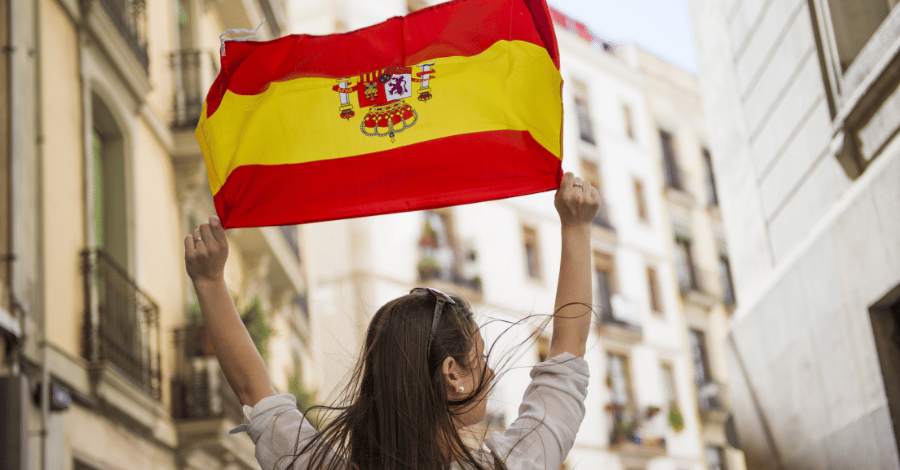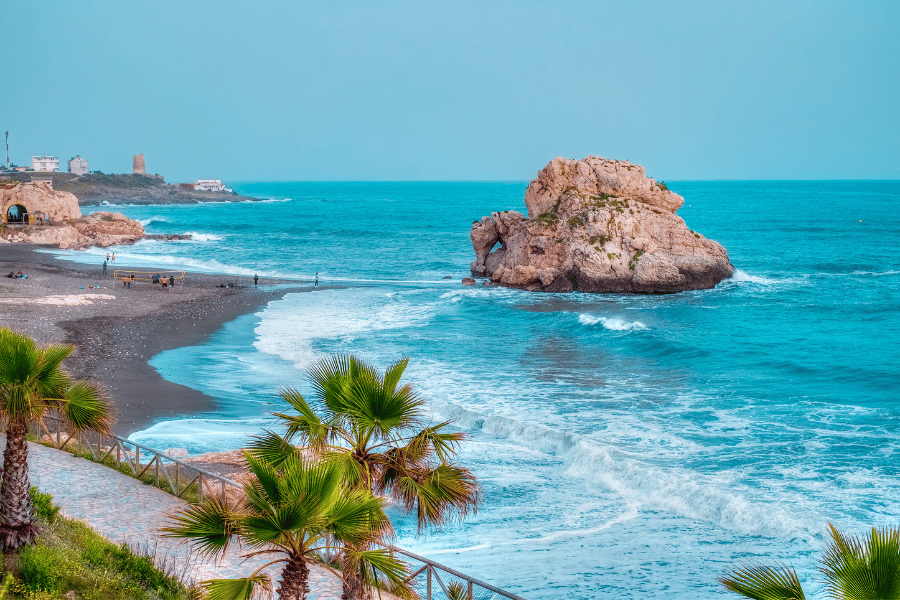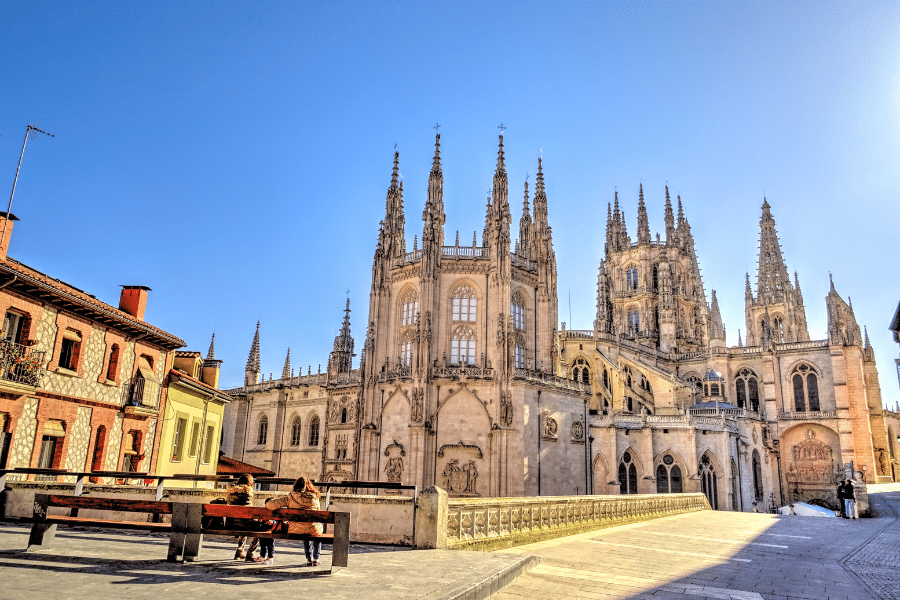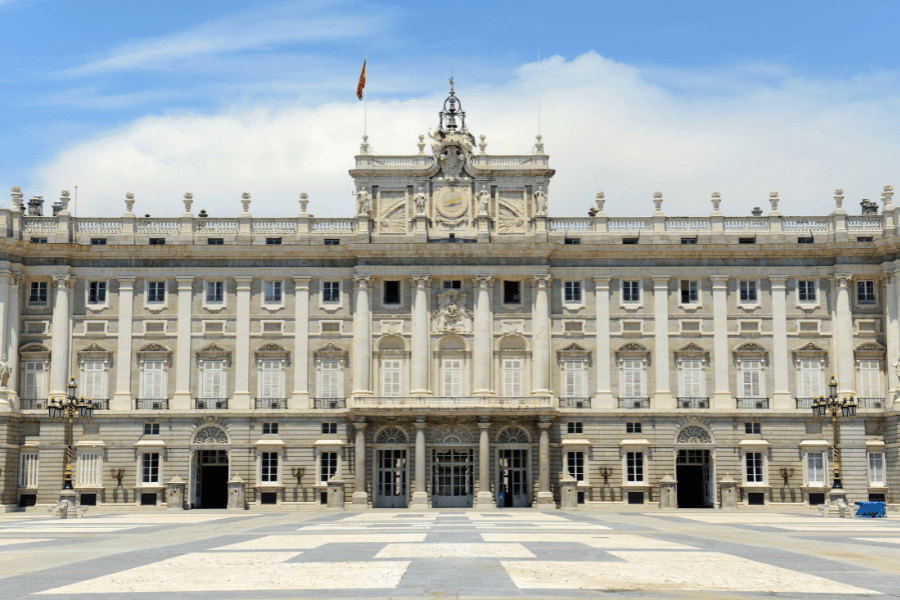When most people think about Spain, they think about sunny Mediterranean beaches and lazy afternoon siestas. But, there is a lot more to Spain as a society. Think of interesting cultural nuances and unique traditions.
If you’re moving to Spain from the US, there are some cultural differences that may affect your daily life when living in Spain, so it’s a good idea to learn a little more about the country. In fact, there are a few surprising facts about Spain that you might not know. From tomato fights to the oldest restaurant in the world, and everything in between, here are 10 fun and intriguing truths about Spain that many foreigners don’t know:
10 Surprising facts about Spain
1. The national Spanish anthem has no words
In Spain, you don’t have to go through the trouble of remembering any words when it comes to the national anthem, called the ‘Marcha Real’. You can simply hum along to the tune. There have been several attempts to set words to the anthem, some of which have been used at past events. But, none of the proposed lyrics has been approved by the Spanish government. The Marcha Real is also one of the world’s oldest anthems, written in 1761.
2. Nudity is legal
With its hot Mediterranean climate in most regions, you might be tempted to strip down to your birthday suit while in Spain. Luckily, there is good news for any budding naturists: Nudity is legal in Spain. Although it’s thought inappropriate in many places, anyone is free to parade down the street naked. General thoughts of decency mean that nudity is largely confined to beaches, though.
3. Home to the oldest restaurant
If you’re a foodie, Madrid is one of the best places to visit. The city is also home to the world’s oldest restaurant. Botin is a restaurant that has been serving up traditional Spanish dishes since 1725! The restaurant has a menu with something for everyone, from cured loin of pork and ham to grilled shrimp and assorted grilled vegetables. It’s worth a visit when you’re in the city!
4. The Spanish keep strange working hours
As an expat, this might be one of the most important things to know before moving to Spain. Most shops and offices are open till 8 pm or even later. This is because the typical lunch break in Spain can last up to two hours. So, don’t plan to get things done between 1 pm and 4 pm!
5. The fourth-highest number of UNESCO world heritage sites
Just behind Italy, China and Germany, Spain has the fourth-highest number of recognized UNESCO world heritage sites. Today, there are 49 sites in the country, including the Burgos Cathedral, the Garajonay National Park, the Old City of Salamanca, the Historic Walled Town of Cuenca and the Tower of Hercules.
6. The world’s biggest food fight is near Valencia
Every year towards the end of August, more than 20,000 people get together in a village close to Valencia to participate in a huge tomato fight festival called La Tomatina. Participants throw around 150,000 tomatoes at each other just for fun. Every year, tickets are sold out almost immediately, so it can be quite tricky to participate, but it’s also fun to watch.
7. The Camino Santiago is extremely popular
The Camino de Santiago, known as the Way of St James, is a network of pilgrimages leading to the shrine of the apostle Saint James based in the cathedral of Santiago de Compostela in Galicia, Spain. This is where tradition holds that the remains of Saint James are buried. The Camino is an important religious expedition that dates back to the Middle Ages. The main route is 500 miles long and takes most people between 4 and 6 weeks to finish.
8. Flamenco dancing is a UNESCO heritage
Music and dancing are essential parts of life in Spain. The best example of this is the Flamenco. This type of song, dance, and instrumental music began at the end of the 18th century in Spain’s Andalusia region. It is thought that its influence came from the Romani gypsies and transformed into what is performed today. UNESCO recently recognized this art form as part of the World’s Intangible Cultural Heritage.
9. The Spanish Royal Family has its fair share of scandals
Historically, Spain was ruled by a monarchy, with some interruptions during the 20th century. Following the death of the dictator, General Franco, in 1975, King Juan Carlos I returned to the throne. But following a string of scandals, Carlos fell from grace. In 2014, he abdicated in favor of his son, Felipe VI. To get to know the Spanish Royals better, be sure to visit their home, the enormous Palacio Real de Madrid.
10. Its 17 separate regions have very unique identities
Spain has 17 autonomous regions, each with their own strong identity, stemming from the fact that they used to be separate kingdoms. Many of these regions have their own unique traditions and dialects. The unification of these regions started when Isabella of Castile and Ferdinand of Aragon married in 1469. Through the years, there has been a lot of agitation in some of the regions for independence from Spain. As you experience the Spanish society in more depth, you are sure to notice the local pride and what makes each region unique.
Living in Spain: Discover something new every day
Spain is a fascinating country. It brims with history and culture. And even when you’re living in Spain, there will always be something new to discover. So, if you’re moving to Spain, be sure to read up on all that the country has to offer!








